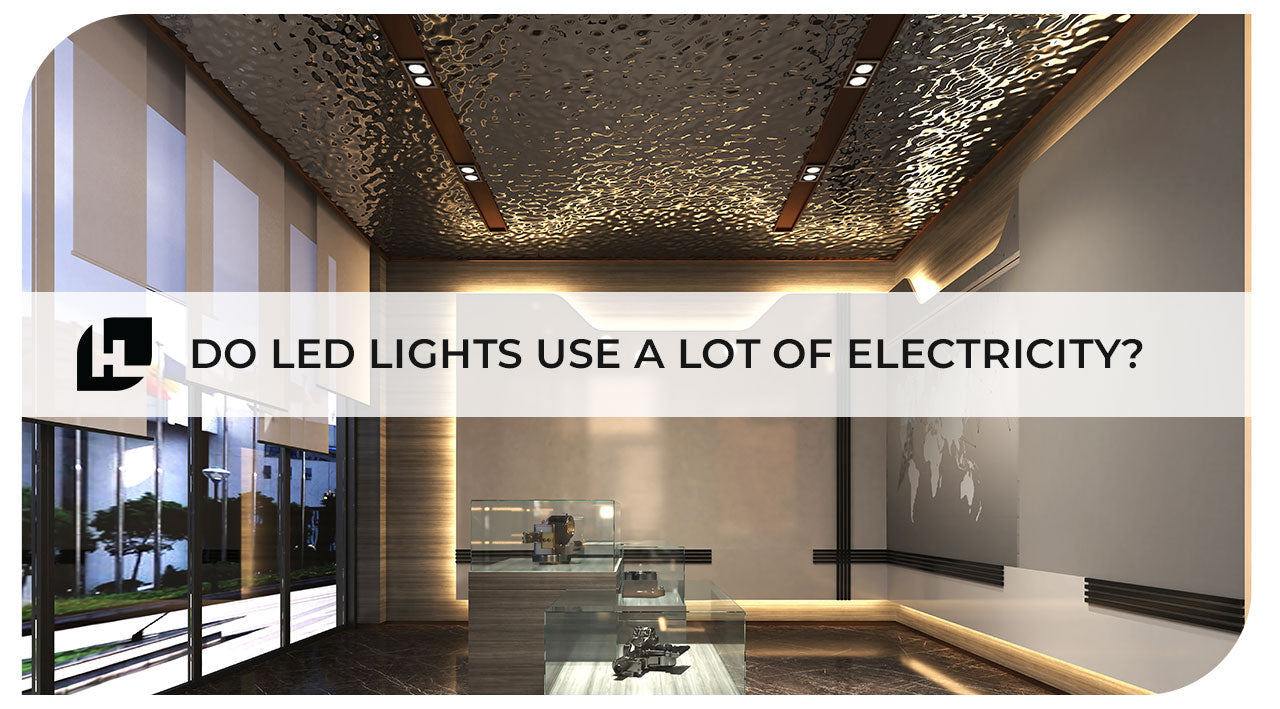Do LED lights use a lot of electricity?
Are you tired of skyrocketing energy bills and looking for ways to cut down on your electricity consumption? LED lights have become a popular choice for households and businesses, thanks to their energy efficiency and longevity. Gone are the days when we had no choice but to pay for hefty electricity bills, no thanks to halogens and light bulbs known for consuming a lot of energy.
But, do LED lights use a lot of electricity? In this blog post, we will delve into the world of LEDs and discover how much energy they really consume compared to traditional incandescent bulbs. So, sit back and let's shed some light on this commonly asked question!
How much electricity do LED lights use?
To answer this question, we first need to understand the concept of power consumption. Power consumption is the amount of electricity used by a device over a period of time, usually measured in watts (W). The higher the wattage, the more electricity a fixture uses.
So, how do LED strip lights compare to traditional incandescent bulbs when it comes to power consumption? Let's take a look at a typical 60-watt incandescent bulb and compare it to an equivalent LED strip light.
A 60-watt incandescent bulb consumes 60 watts of electricity per hour. If left on for 10 hours, it would consume 600 watt-hours (Wh) of electricity. On the other hand, an equivalent LED strip only consumes around 9-12 watts per hour, depending on its brightness. This means that if left on for 10 hours, an LED strip would consume only 90-120 watt-hours of electricity, versus the 600 watt-hours from the incandescent bulb.
Energy Efficiency of LED Lights
One of the main reasons why LED lights use less electricity than incandescent bulbs is their energy efficiency. LED lights are much more efficient at converting electrical energy into light than incandescent bulbs. In fact, LED lights are up to 80% more efficient than traditional bulbs.
This is because LED lights produce light through a process called electroluminescence, which involves the emission of light from a semiconductor material when an electric current is passed through it, simply put, LEDs are instant-on. This process is much more efficient than the process used in incandescent bulbs, which involves heating a filament to produce light. As a result, LED lights produce much less heat, and most of the energy they consume is converted into light.
Factors that Affect LED Power Consumption
While LED lights are generally more energy-efficient than traditional bulbs, there are some factors that can affect their power consumption. These include:
Brightness: The brighter the LED light, the more electricity it will consume. However, even the brightest LED lights consume significantly less electricity than their incandescent counterparts. There are several types of LED strips that impact brightness.
- 12V and 24V Rated LED strips, the later being brighter due to higher voltage rating
- Standard vs High Density LED Strips, the higher density being brighter since the LEDs here are more compact.
- COB lights, this LED is bright and compact but are still more energy efficient than traditional lighting systems.
Color temperature: LED lights come in a variety of color temperatures, ranging from warm white to cool white. The color temperature can affect the power consumption of the LED light, with warmer temperatures generally consuming less electricity than cooler temperatures. This may be true with other manufacturers. With Hitlights this depends on the type of LED used, if the LED strip is standard density power consumption will be the same across the different color temperature, the same goes with high-density strips, however, this may be true with other manufacturers.
Usage time: The longer an LED light is used, the more electricity it will consume. However, as we saw earlier, even when left on for extended periods of time, LED lights consume significantly less electricity than traditional bulbs.
How to Choose Energy-Efficient LED Lights
If you're looking to switch to LED lights to reduce your electricity bills and energy consumption, there are a few things to keep in mind when selecting LED lights. Here are some tips:
Look for high-quality LED lights: High-quality LED lights are more energy-efficient and last longer than cheaper, low-quality alternatives. Look for LED lights that are UL listed, which means they have been tested and certified to meet safety and quality standards.
Choose the right brightness level: Select an LED light with a brightness level that meets your needs without being excessively bright. This will help reduce power consumption and ensure that you're not wasting energy.
- Go with standard density if your aim is to get subtle lighting
- Your perfect fit for high density LED strips will be general to task lighting applications
Consider color temperature: If you're looking to save energy, choose an LED light with a warmer color temperature, as these tend to consume less electricity than cooler temperatures.
- This will vary depending on the manufacturer of choice
- Ideally, this depends on the make of the LED strip if it has a varying power consumption per different color temperature. Best to check the specifications that shows the wattage per foot consumption of the LED strip per color temperature.
For any additional questions or concerns, you can also get in touch with any of our expert engineers and tech at 1 (855) 768-4135.


